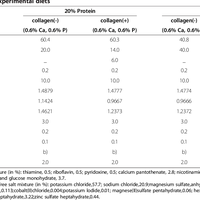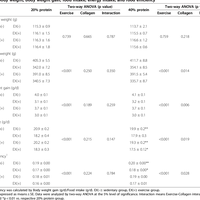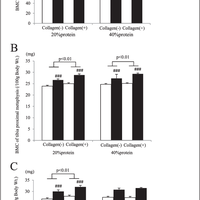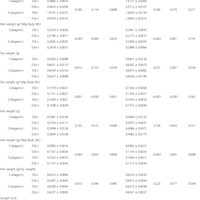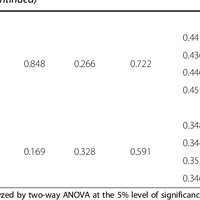Abstract
Background: Some studies have shown that dietary hydrolyzed collagen peptides (HC) effectively prevent age-related bone loss. However, it is not known whether the intake of HC also has positive effect on bone mass or strength when combined with exercise during growth phase.Methods: We examined the effects of 11 weeks of HC intake and running exercise on bone mass and strength in growing rats. Rats were randomized into four groups, the 20% casein group (Casein20), the 40% casein group (Casein40), the 20% HC group (HC20), and the 40% HC group (HC40). Each group was further divided into exercise groups (Casein20 + Ex, Casein40 + Ex, HC20 + Ex, HC40 + Ex) and non-exercise group (Casein20, Casein40, HC20, HC40). In the HC intake groups, 30% of casein protein was replaced with HC. Exercise group rats were trained 6 days per week on a treadmill (25-30 m/min, 60 min) for 60 days. After being sacrificed, their bone mineral content (BMC) and bone strength were evaluated.Results: Exercise and dietary HC effects were observed in the adjusted BMC of lumbar spine and tibia among the 20% protein groups (p < 0.001 for exercise; p < 0.05 for dietary HC, respectively). These effects were also noted in the adjusted wet weight and dry weight of femur among the 20% protein groups (p < 0.001, p < 0.01 for exercise; p < 0.01, p < 0.001 for dietary HC, respectively). On the other hand, in adjusted bone breaking force and energy, dietary HC effect was not significant. Among the 40% protein groups, similar results were obtained in the adjusted BMC, femoral weight, bone breaking force, and energy. There were no differences between the 20% protein groups and the 40% protein groups.Conclusions: The present study demonstrated that moderate HC intake (where the diet contains 20% protein, of which 30% is HC) increased bone mass during growth period and further promoted the effect of running exercise. On the other hand, a higher HC intake (where the diet contains 40% protein, of which 30% is HC) had no more beneficial effect on bone mass than the moderate HC intake. © 2013 Takeda et al.; licensee BioMed Central Ltd.
Figures
Author supplied keywords
Register to see more suggestions
Mendeley helps you to discover research relevant for your work.
Cite
CITATION STYLE
Takeda, S., Park, J. H., Kawashima, E., Ezawa, I., & Omi, N. (2013). Hydrolyzed collagen intake increases bone mass of growing rats trained with running exercise. Journal of the International Society of Sports Nutrition, 10. https://doi.org/10.1186/1550-2783-10-35

